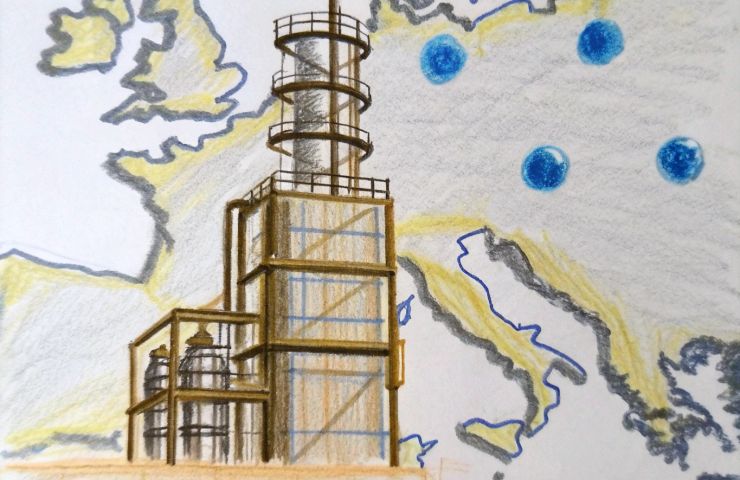
Green Hydrogen Momentum Stumbles as RED III Delays Shake EU Market
October 17, 2025You might shrug off a paperwork snag when you’re chasing something as bold as carbon neutrality and a green hydrogen-powered economy by 2050. Yet here we are: as of August 2025, almost a third of EU countries haven’t tucked Renewable Energy Directive III (RED III) into their national laws. That hold-up is clogging the hydrogen offtake agreements that the whole emerging green hydrogen market leans on.
We’re talking about gigawatt-scale plans—from giant electrolyser parks to refineries on standby for hydrogen feedstocks. But without a rock-solid regulatory bedrock, investors won’t bite. Every week of limbo? It pushes up costs and drags out the clean energy payback.
Why are national delays such a big deal?
RED III dropped in late 2023 with some heavy-hitting goals: at least 42.5% renewables in the EU’s energy mix by 2030 and a binding 42% of RFNBO hydrogen in industrial uses. These targets are the pillars of the European Green Deal and the broader EU renewable energy directive push under Fit for 55, aiming to slash 55% of greenhouse gas emissions by 2030 (vs. 1990).
But even though RED III officially took effect in November 2023, the countdown to national adoption has hit snooze mode. By August 2025:
- 15 member states haven’t even tossed out an implementation draft.
- A patchwork of rules is tripping up hydrogen offtake agreements.
- Investor faith is wobbling thanks to mixed signals instead of a single rulebook.
Sure, this isn’t Europe’s first rodeo—RED I kicked things off in 2009 and RED II in 2018. But RED III zeroes in on hydrogen in a way we haven’t seen before. The 2022 energy crunch and ongoing geopolitical drama really shone a spotlight on our fossil-fuel Achilles’ heel.
How are companies adapting?
Big players aren’t waiting around. Repsol calls green hydrogen the smartest compliance route for EU refineries, while TotalEnergies has its roadmap synced with RED III mandates. Both are hustling to drop hundreds of megawatts of electrolysers at key sites.
“By committing now, we’ll hit the ground running once the laws land,” a Repsol rep says. They also flag a big risk: stop-start adoption could drive up hydrogen prices in some corners of Europe, wrecking the idea of a smooth, cross-border supply chain.
How does green hydrogen production work?
At its core, green hydrogen—tagged as Renewable Fuels of Non-Biological Origin (RFNBO) under RED III—comes from splitting water using only renewable electricity. Here’s the skinny:
- Harvest renewables like wind or solar.
- Feed that juice into an electrolyser to split water into hydrogen and oxygen.
- Capture and store the hydrogen for transport or industry.
- Seal the deal with RFNBO certification so everyone knows it’s zero-carbon.
The RFNBO system hinges on registries that log renewable power production alongside hydrogen output. Think of it as a digital trail of breadcrumbs proving that every kilo of hydrogen meets the EU’s strict sustainability rules.
What are the benefits?
Scaling up green hydrogen packs a punch:
- Climate wins: Swap out fossil feedstocks and knock down CO₂ in sectors from steel to chemicals.
- Energy security: Lean on homegrown renewables instead of edging over to the global gas market.
- Economic boost: About $15 billion might flow into retrofits to make refineries RFNBO-ready—hello fresh investments.
- Jobs, jobs, jobs: More work in building electrolysers, hooking up systems and managing certification.
What happens if delays continue?
No clear rules mean buyers sit on their hands instead of signing hydrogen offtake agreements, and developers pause new electrolysers. That gridlock kills demand growth—as countless industry reports warn—and puts cross-sector decarbonization at risk. Think fuel-cell trucks, advanced biofuels and renewable power projects; they all need a reliable hydrogen backbone.
Developers say that months of prep can blow up overnight when a government hits snooze on its transposition deadline. Without binding purchase deals, banks and investors simply walk away. Each postponement hands an edge to Asia and North America, where hydrogen strategies aren’t just talk—they’re full steam ahead.
What’s next for the EU hydrogen market?
There are flickers of good news. Germany plans to roll out RFNBO certificates priced around $250–$300 per tonne by 2030, riffing on its Guarantees of Origin scheme for renewable electricity. That could help close the cost gap and make new electrolyser projects bankable.
Industry groups and some policy wonks are pressing for a fast-lane approach to national transposition. “Regulatory clarity is the oxygen that fuels investment,” as one TotalEnergies exec puts it. If Brussels and EU capitals nail the legal bits before year-end, Europe’s green hydrogen ambitions could really hit their stride.
For companies, investors and citizens alike, the message couldn’t be clearer: Europe can’t let red tape choke off its clean energy revolution. These next few months are make-or-break—green hydrogen isn’t just another buzzword; it’s the backbone of the continent’s sustainable future.
Let’s not forget: RED III isn’t just a stack of legalese. It’s the cornerstone of Europe’s hydrogen future. From the turbines generating renewable juice to the factories and refineries hungry for cleaner feedstocks, every link in the chain depends on a clear, uniform rulebook. Get the transposition across the finish line, and the EU could score a first-mover edge in a market poised to hit €1 trillion by 2050. But to get there, the red tape’s got to go.



 With over 15 years of reporting hydrogen news, we are your premier source for the latest updates and insights in hydrogen and renewable energy.
With over 15 years of reporting hydrogen news, we are your premier source for the latest updates and insights in hydrogen and renewable energy.